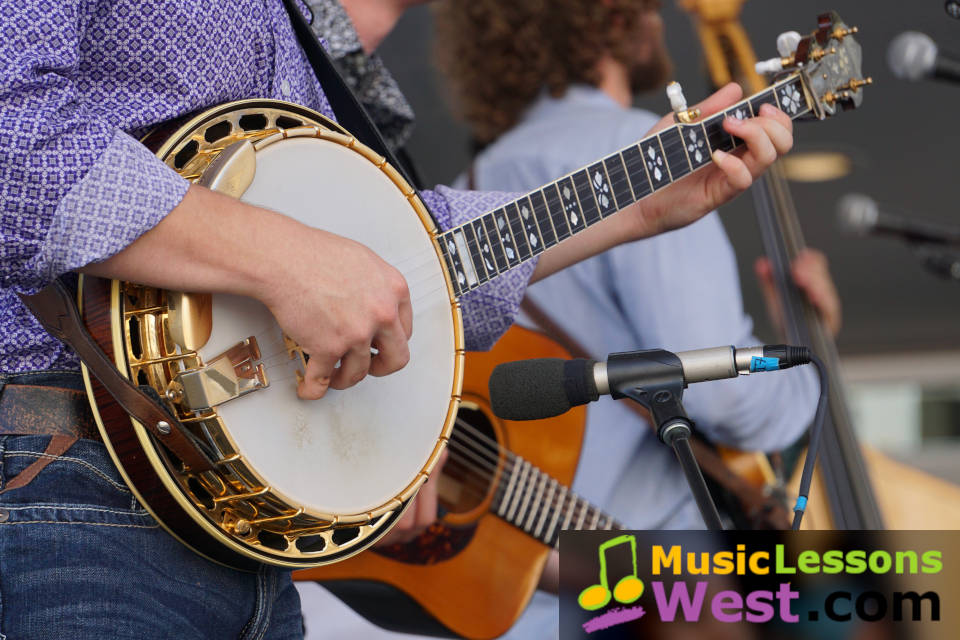Banjo Lessons Knoxville TN – Nationwide | Ryan Byrne – Online Banjo Instructor

BANJO LESSONS KNOXVILLE TN: Popular Knoxville Academy of Music instructor Ryan Byrne is currently accepting new online banjo students of all ages – but act fast, there are only a few spots remaining on his schedule!
Overview
The banjo is very heavily associated with bluegrass and country music, especially here in East Tennessee, but it has a very diverse and interesting history with origins in Africa and is used across multiple other genres including folk, Appalachian, Celtic, dixieland/jazz, classic banjo, and rock. There are several types of banjo, such as the 5-string banjo, the 4-string/tenor banjo, and the long-neck banjo. There are also several ways to pluck the banjo as well, depending heavily on the genre to be played. Finger picks are used by most bluegrass banjo players. Plectrums (like a guitar pick) are popular among banjoists that play Celtic, dixieland/jazz, and rock. Last but not least, bare fingers are used by clawhammer (folk) banjo players and by those playing fingerstyle “classic banjo”.
Picks vs. Fingers
Should you pluck the banjo with your bare fingers or with finger picks? That depends a lot on what genres/styles of banjo you want to learn to play. We have found that the majority of our banjo students here in East Tennessee want to learn bluegrass, with a minority wanting to learn clawhammer style. So, the answer to the first question is: If you want to play bluegrass, you will want to play with finger picks. If you want to learn clawhammer banjo, then you will learn to play with your bare fingers. If you want to learn both, then you will want to learn to play with and without finger picks.
If you want to play with finger picks, how soon should you start using finger picks? This question is often the subject of debate between banjo instructors. It is the general consensus that students should start wearing their finger picks sooner than later. How soon is where the debate comes in. Some instructors believe that you should start immediately with the finger picks so that you “don’t waste any time relearning how to play” after starting with bare fingers. Yet other instructors believe that the student should first learn with bare fingers, so that there is one less thing to contend with during the frustrating early stages of learning to play. This is especially true with young children for the reason already listed, as well as the fact that is simply hard to find child size finger picks that will fit comfortably. On this matter, Ryan Byrne agrees with the second school of thought, stating: “Some banjo instructors come from more of a performance background, and some come from more of an education background. Though I am a professional performing musician, I also have a degree in Music Education and have nearly 15 years of experience teaching at both public schools and private schools. Someone with a degree in music performance learns how to play music. Someone with a degree in music education learns how to teach music. Education majors learn how to present information in steps to pace the learning and not overburden the student, keeping them from getting frustrated and wanting to give up. So I do believe in having a banjo student start with bare fingers as a step in the learning process, and then transitioning to finger picks. One need not look any further than the professional banjo player, Ned Luberecki, who one minute will be ripping out a blistering bluegrass song wearing his finger picks, and the next will be slipping his finger picks off to play a smooth rendition of the jazz standard, ‘Girl From Ipanema’, with his bare fingers. I believe the true banjo player can play equally proficiently with and without finger picks”.
